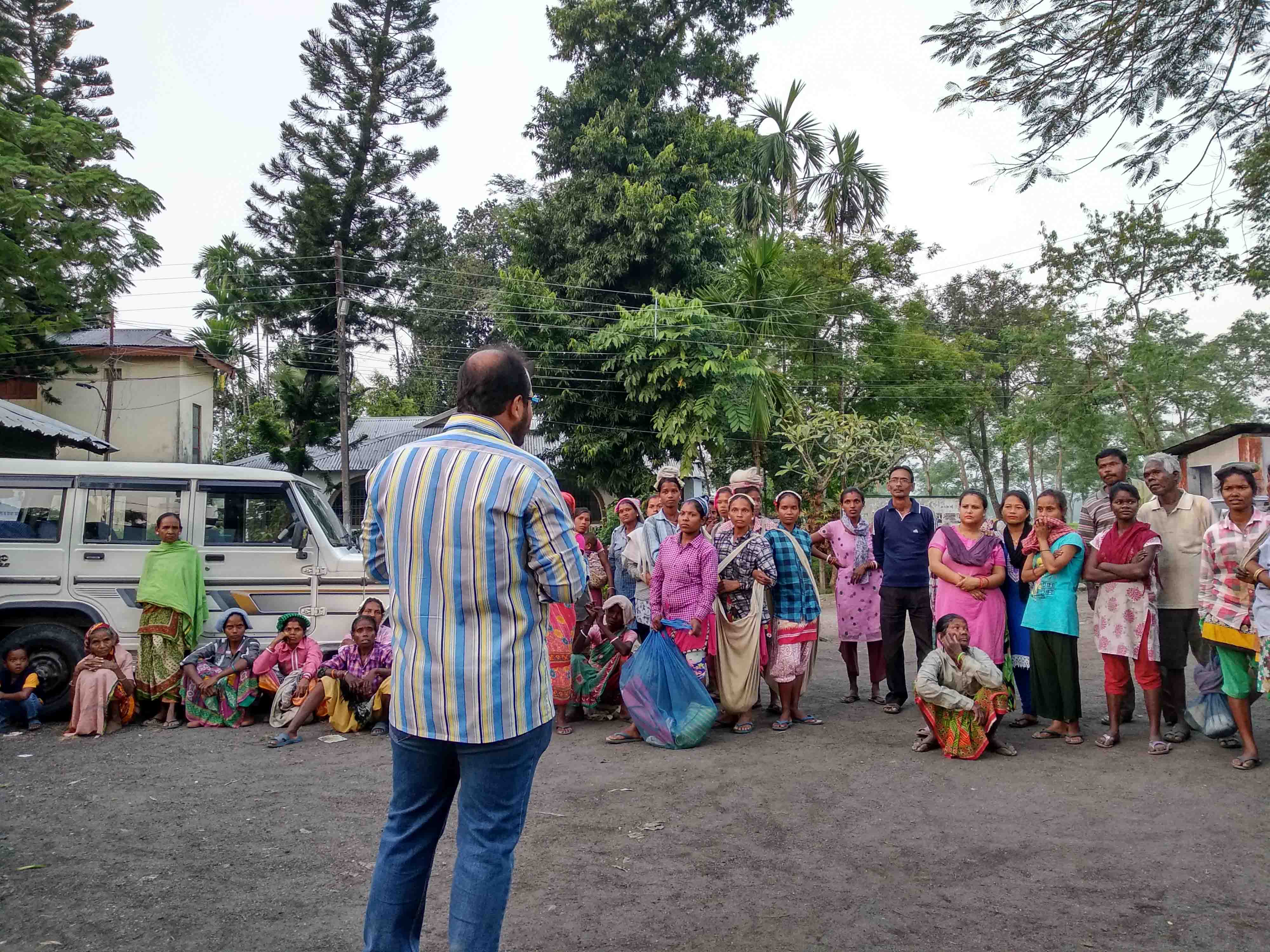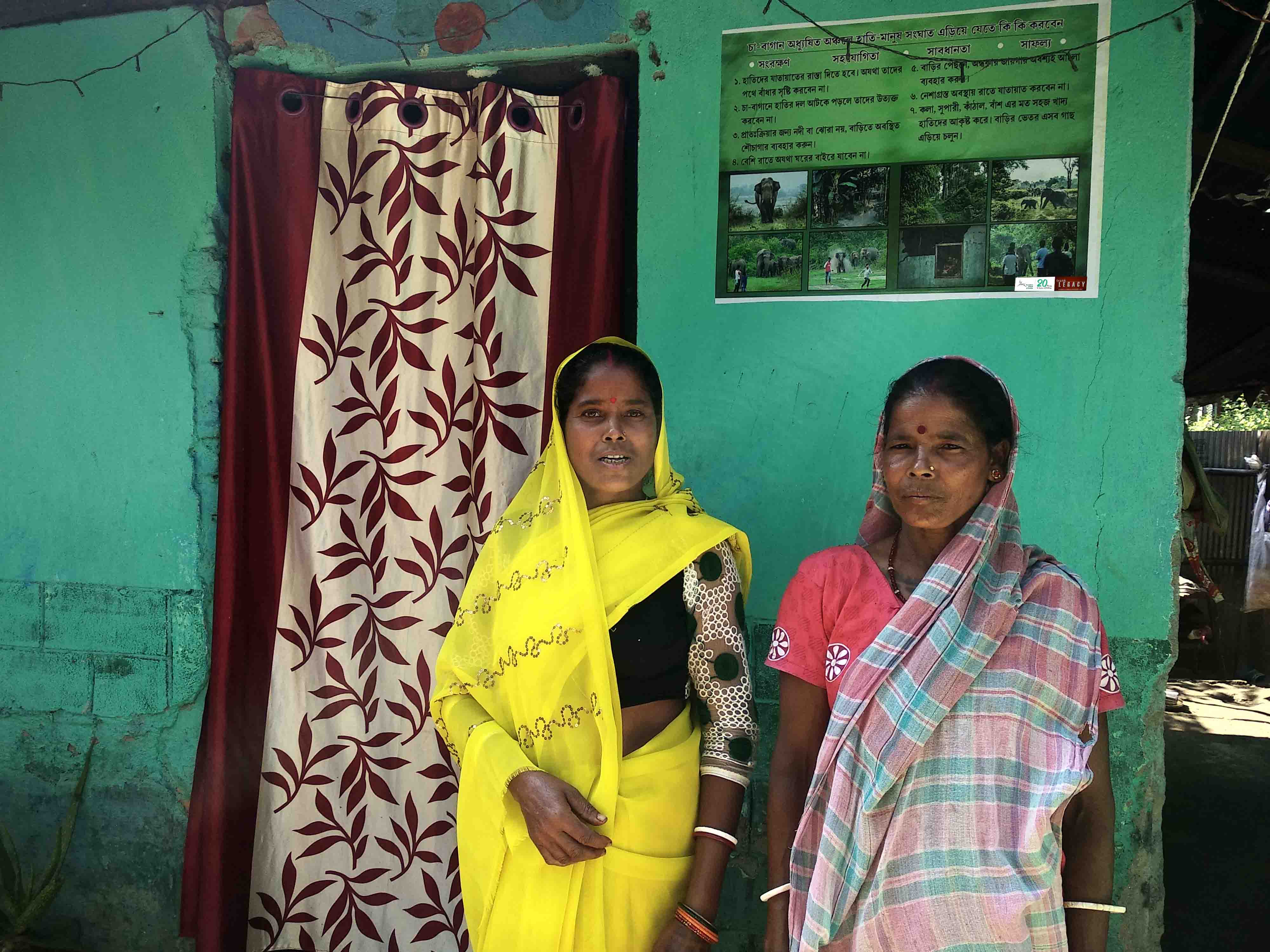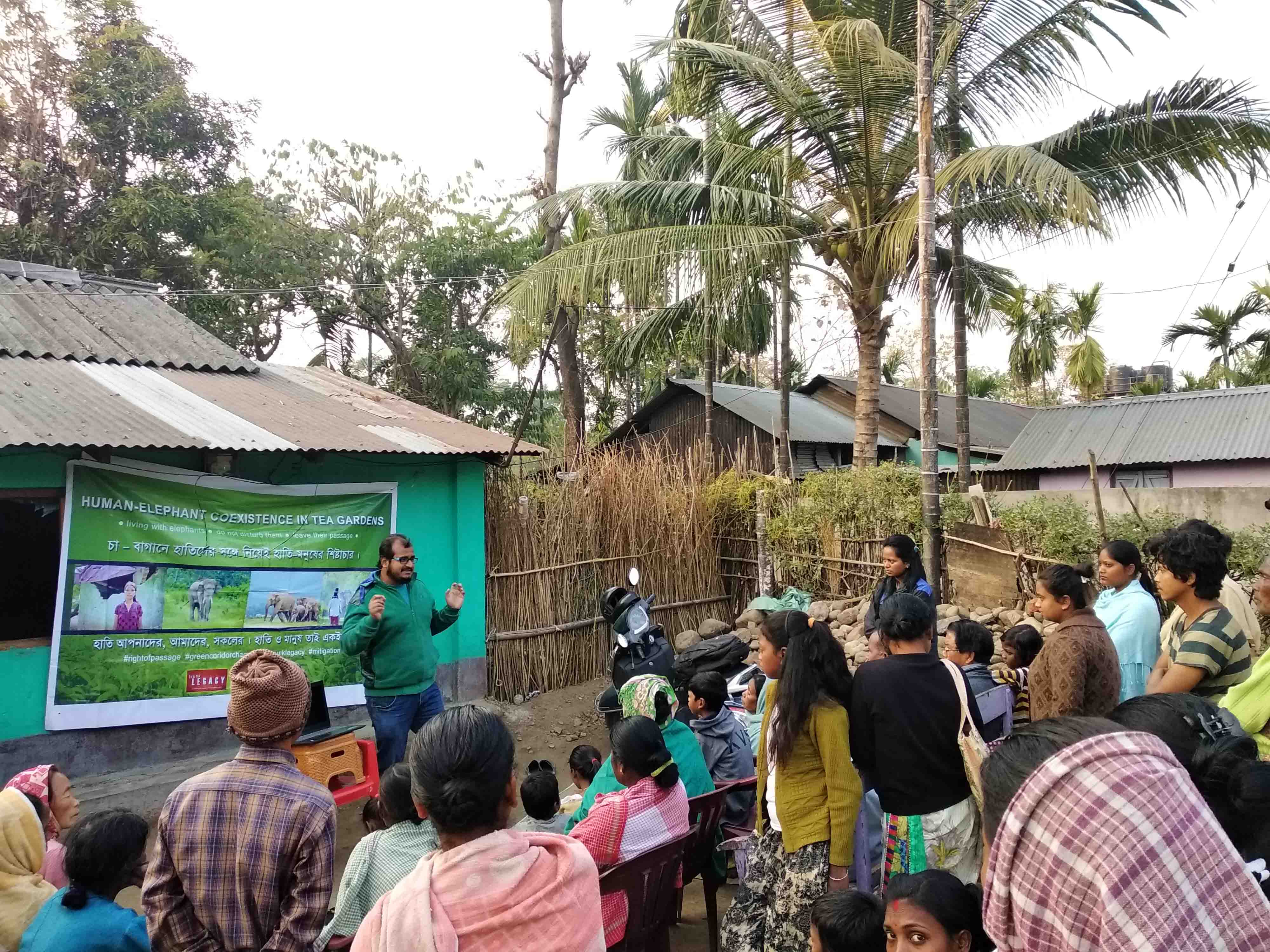Bengal :The east-west ecological range of the Terai elephant population in Northern West Bengal extends from the Teesta chaur (Baikunthapur Division) through Mahananda Wildlife Sanctuary (MWLS) under Wildlife Division-I and southern forests of Kurseong Division, up to Bahundangi Village Development Council, Jhapa district, Nepal, on the western border. In recent years, this landscape, interspersed with human habitations, has become an extensive human-elephant conflict (HEC) zone in terms of human mortality, crop depredations and loss of properties. The high degree of ranging by elephants in search of food, along with ever-increasing biotic pressure and high human population density has resulted in increased human-elephant conflict in the
landscape.

A series of awareness programmes were initiated in the Terai zone by Wildlife Trust of India along with our Green Corridor Champion, Mr Avijan Saha and with support from Global Giving. With the aim to sensitise the tea estate workers and tea-estate authorities on ways to avoid negative encounters between humans and elephants, tea estates in the region prone to human-elephant conflict situations were prioritized based on which the interactions camps were conducted.

The first of its kind awareness programme targeting tea estates commenced in October 2018 and successfully culminated in the month of January 2019. In this period of four months, a series of sensitization activities encompassing eight tea estates (Kiranchandra, Ashapur, Chumta, Marapur, Marryview, Rohini, Shimulbari and ORD Terai) were conducted to build public support for securing Right of Passage for elephants by facilitating their unhindered movement. These programmes have helped sensitise more than 470 people including tea estate labour workers, tea estate management authorities, villagers from nearby areas and night patrolling teams on the urgency to protect elephants and need to initiate elephant friendly practices in their tea estates.
The message of human-elephant co-existence was spread through photographic presentations, documentaries and video footage. The locals were made aware of frequently used paths of elephant movement and the precautionary measures to avoid human-elephant conflict situations.

Some of the measures suggested during the programme included avoiding open defecation and frequent visits to riverbed inside tea gardens, unnecessary disturbance to elephants and their habitat and usage of unethical means to drive away elephants was also discouraged. Taking into consideration that local communities play a pivotal role in conservation, WTI now plans to initiate another series of sensitization programmes at the village and school level along with Mr Avijan Saha to strengthen community engagement in the region and garner communities support for the conservation of our National Heritage Animal-Asian elephant and its habitat.